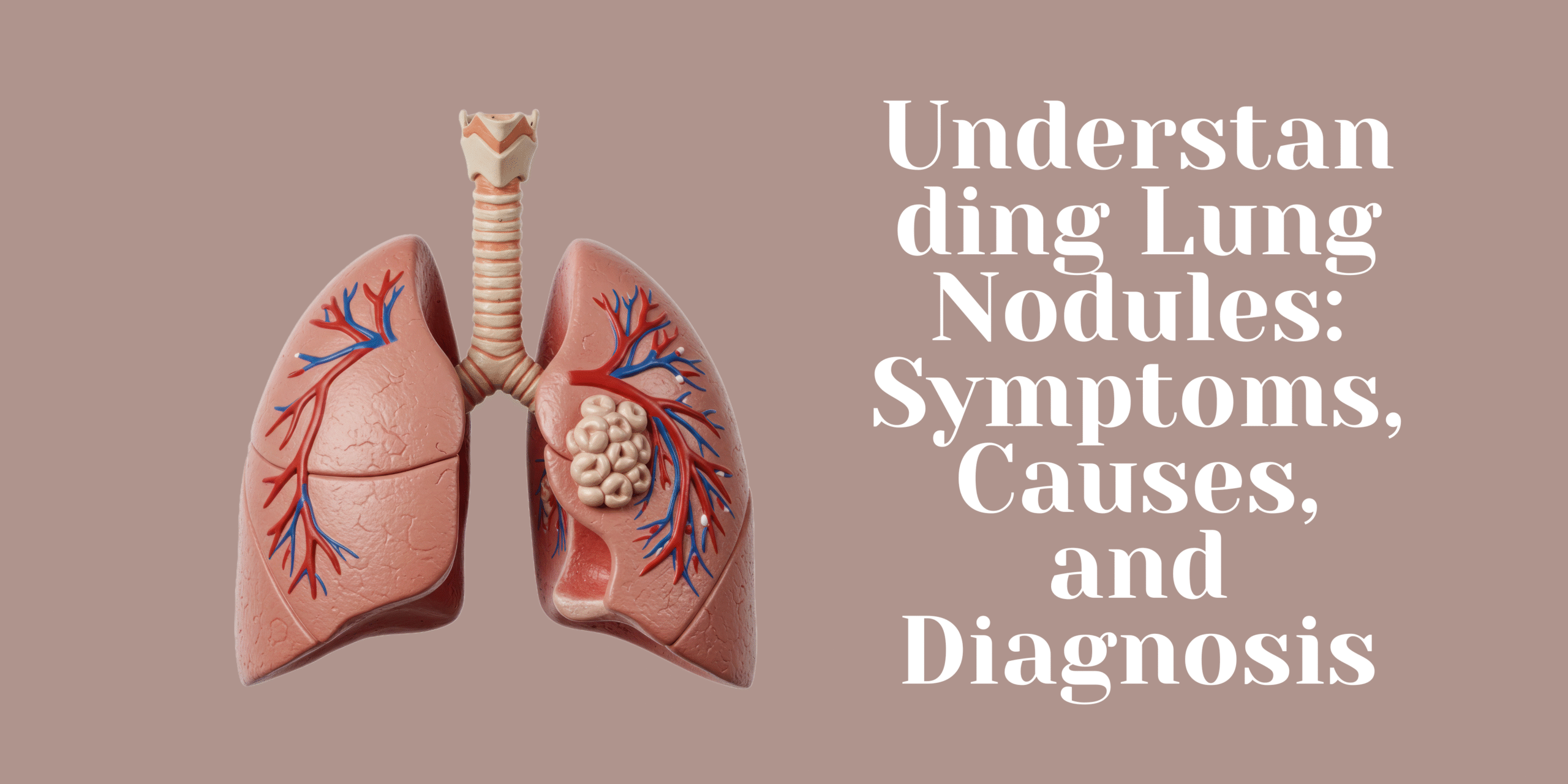Lung nodules are small, abnormal growths or spots that can be found on the lungs. While these nodules are often detected incidentally during imaging tests such as chest X-rays or CT scans, they can raise concern for many people due to the potential association with lung cancer. However, the vast majority of lung nodules are benign and not cancerous. In this blog, we will discuss the symptoms, potential causes, diagnosis, and treatment options related to lung nodules to help you understand this common yet often misunderstood condition.
What Are Lung Nodules?
A lung nodule, also known as a pulmonary nodule, is defined as a round or oval-shaped abnormal growth in the lung tissue. These nodules can vary in size, with most being smaller than 3 centimeters in diameter. Nodules can develop for a variety of reasons and may either be benign (non-cancerous) or malignant (cancerous). The size, shape, and location of the nodule are key factors in determining whether it poses a risk for lung cancer. Lung nodules treatment depends on the nature of the nodule, with options ranging from monitoring and follow-up scans to biopsy or surgical removal if cancer is suspected.
Common Causes of Lung Nodules
Lung nodules can develop due to various causes, including infections, inflammation, or even benign growths. Some of the most common causes of lung nodules include:
- Infections: Bacterial, viral, or fungal infections can lead to the formation of lung nodules. These infections may include tuberculosis (TB), pneumonia, or fungal diseases such as histoplasmosis or coccidioidomycosis.
- Inflammatory Conditions: Conditions like rheumatoid arthritis or sarcoidosis can cause inflammation in the lungs, leading to the formation of nodules.
- Benign Tumors: Non-cancerous tumors such as hamartomas or granulomas can form in the lungs.
- Lung Cancer: Malignant growths are another possible cause of lung nodules, though it’s important to note that the vast majority of lung nodules are benign.
Lung Nodule Symptoms
Many people with lung nodules experience no symptoms at all. In fact, most lung nodules are discovered incidentally during imaging tests performed for other reasons. However, in some cases, lung nodules can cause noticeable symptoms, particularly if they are large or located in a critical area of the lung.
1. Coughing
Persistent coughing is one of the most common symptoms that could indicate the presence of a lung nodule, particularly if the nodule is large or located in a region of the lung that affects airflow. The cough may be dry or produce phlegm, and in rare cases, it can be accompanied by blood.
2. Chest Pain or Discomfort
If the lung nodule is located near the chest wall or if it causes irritation in the lungs, it may result in discomfort or pain. The chest pain associated with lung nodules is often dull or aching in nature and may worsen when breathing deeply or coughing.
3. Shortness of Breath
A lung nodule, especially one that is large or located near the airways, may cause difficulty breathing. This may manifest as shortness of breath, wheezing, or a feeling of tightness in the chest. This symptom is more likely if the nodule obstructs the airways or leads to infection.
4. Coughing Up Blood (Hemoptysis)
Although rare, some individuals with lung nodules may cough up blood or experience bloody sputum. This could indicate an infection or inflammation related to the nodule, or in some cases, it could be a sign of a more serious condition like lung cancer.
5. Fatigue and Weight Loss
While these symptoms are more commonly associated with advanced stages of lung cancer, they can also occur in people with lung nodules, particularly if the nodule is malignant. Unexplained fatigue, weight loss, and loss of appetite should be investigated further.
Risk Factors for Developing Lung Nodules
While anyone can develop lung nodules, certain factors can increase the likelihood of their formation. These risk factors include:
- Smoking: Smoking is the leading risk factor for developing lung cancer, and people who smoke or have smoked in the past are at a higher risk of developing lung nodules.
- Age: Lung nodules become more common as people age, especially in individuals over the age of 50.
- Exposure to Environmental Toxins: Long-term exposure to substances such as asbestos, radon, or other harmful chemicals can increase the risk of developing lung nodules and lung cancer.
- Family History of Lung Cancer: A family history of lung cancer may increase the likelihood of developing lung nodules, particularly malignant ones.
Diagnosing Lung Nodules
If a lung nodule is detected, your healthcare provider will likely recommend further tests to determine its cause and whether it is benign or malignant. The diagnostic process usually includes:
1. Imaging Tests
- Chest X-ray: A chest X-ray may be the first step in detecting a lung nodule, although it may not provide enough detail to determine whether the nodule is benign or malignant.
- CT Scan: A more detailed CT scan provides clear images of the lung and allows doctors to assess the size, shape, and location of the nodule. A CT scan can help doctors determine whether the nodule is more likely to be cancerous.
2. Biopsy
If the nodule is suspicious for malignancy, your doctor may recommend a biopsy to obtain a tissue sample. This can be done through a needle biopsy, where a thin needle is inserted into the nodule, or through a bronchoscopy, where a small camera is used to access the lung.
3. PET Scan
A PET scan can be used to detect whether the nodule is metabolically active, which can indicate malignancy.
4. Monitoring
In many cases, if the nodule is small and not suspicious, your doctor may recommend regular monitoring through imaging tests to track any changes over time.
Treatment Options for Lung Nodules
Treatment for lung nodules depends on the cause and whether the nodule is benign or malignant.
- Benign Nodules: If the nodule is determined to be benign, treatment may not be necessary. However, regular monitoring through imaging tests may be recommended to ensure the nodule does not change or grow over time.
- Infections or Inflammatory Conditions: If an infection or inflammation is the cause, antibiotics, antifungal medications, or corticosteroids may be prescribed to treat the underlying condition.
- Malignant Nodules: If the nodule is cancerous, treatment options may include surgery to remove the nodule or the affected part of the lung, radiation therapy, chemotherapy, or targeted therapy, depending on the stage and type of cancer.
Conclusion
While the discovery of a lung nodule can be concerning, it is important to understand that the vast majority of these nodules are benign. Only a small percentage of lung nodules are cancerous, and many of them can be effectively treated if detected early. If you experience any symptoms such as persistent coughing, chest pain, or shortness of breath, it is important to seek medical advice promptly to determine the cause and receive appropriate treatment. Regular screening and timely diagnosis are key to managing lung nodules effectively and ensuring optimal health outcomes.






